Recent Articles
Popular Makes
Body Types
10 Toyota Highlander Competitors
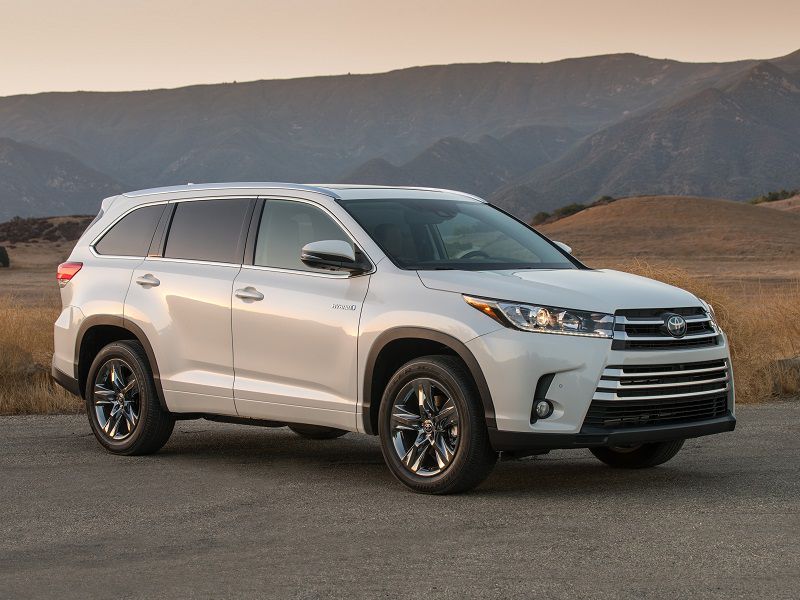
2018 Toyota Highlander Hybrid White Front Quarter ・ Photo by Toyota
The 2018 Toyota Highlander is one of the top three-row SUVs in the country. But the Highlander's best competitors are pretty impressive as well. Like the Toyota product, those rivals can serve up three rows of seating, plenty of cargo space, and many different cutting-edge technologies.
Some also have advantages that Toyota can’t match. For example, the Highlander isn’t the roomiest vehicle in the segment, and it doesn’t offer the latest Android Auto/Apple CarPlay smartphone-integration systems. Nor does it come with a mobile Wi-Fi hotspot, like some three-row SUVs do. And while the Highlander is the only vehicle here with an available hybrid powertrain, others can deliver more power and higher tow ratings. The Highlander alternatives have a variety of additional benefits, too, as we detail in the following pages.
2018 Chevrolet Traverse
The 2018 Chevrolet Traverse is among the biggest Toyota Highlander competitors. In fact, the Traverse is nearly a foot longer than the Highlander, and that shows up when you compare their cabin sizes. The Traverse has an extra 14.5 cubic feet of total cargo space and 20 percent more third-row legroom.
The Traverse also features mobile Wi-Fi, Android Auto, and Apple CarPlay as standard content. You won’t find any of those technologies on any of the Highlander trim levels. Further, even though Toyota provides the most standard safety systems, the Traverse costs less to start. As a result, you can use the savings toward Chevy options like collision-avoidance braking, lane-keeping assistance, adaptive cruise control, and more.
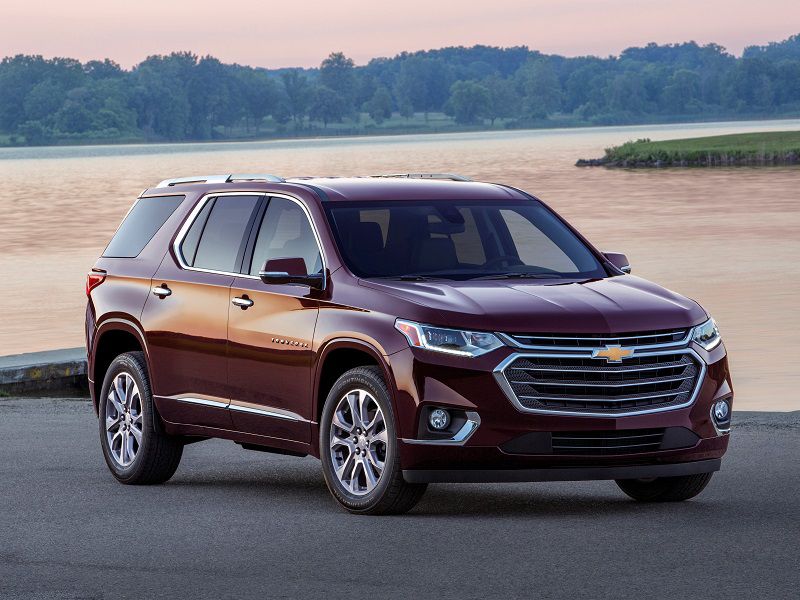
Photo by General Motors
2018 Ford Explorer
Another of the bigger Toyota Highlander competitors is the 2018 Ford Explorer. Now, it’s not quite as long as the Chevrolet Traverse, but the Explorer still has significantly more space for passengers in the “way back” seating. To be exact, there’s an extra 5.6 inches of third-row legroom in the Explorer, plus 1.9 more inches of third-row headroom.
The Ford then checks in with connectivity technology that’s missing from the Highlander — like mobile Wi-Fi, Android Auto, and Apple CarPlay. The Explorer also brings an exciting advantage under the hood. The Sport and Platinum trims boast a 3.5-liter EcoBoost turbocharged V6 that pours out 365 horsepower and 350 pound-feet of torque. The most powerful Highlander engine tops out at 295 horses with 263 pound-feet of torque.
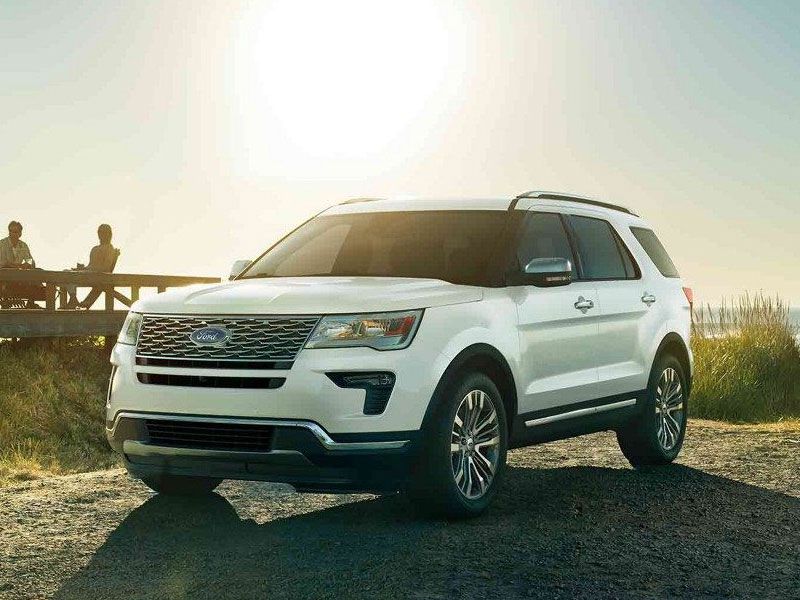
Photo by Ford
2018 Dodge Durango
Toyota Highlander competitors from the U.S. brands also include the 2018 Dodge Durango. Like the Traverse and Explorer, the Durango is noticeably longer than the Highlander, and it offers the advanced Android and Apple smartphone integration technology that the Highlander lacks.
The real difference-makers, however, are the Durango’s two available Hemi engines. The 5.7-liter V8 can unleash 360 horsepower and 390 pound-feet of torque, which raises the Dodge’s towing capacity to 7,400 pounds — more than a ton higher than the Highlander’s. The Durango SRT raises the bar with a classic 392-cubic-inch monster that’s good for 475 horsepower and 370 pound-feet of torque. With that engine, the Durango can dash from 0-60 in a mere 4.4 seconds or pull up to 8,700 pounds.
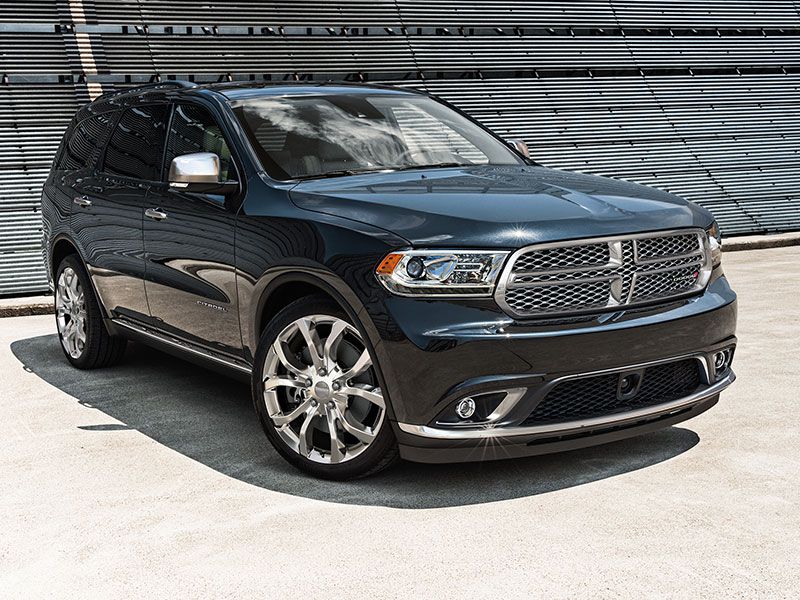
Photo by Dodge
2019 Honda Pilot
If you’re looking for Toyota Highlander competitors from the import brands, you can start with the 2019 Honda Pilot. The Pilot supplies most of the benefits we’ve already mentioned, which means you can enjoy mobile Wi-Fi, Android Auto, Apple CarPlay, and a more spacious third row than in the Highlander. Yet despite that additional room, the Honda has nearly the same nimble exterior dimension. That makes the Pilot easier to maneuver than the larger domestic entries.
Also, the 2019 Pilot has been thoroughly updated for the new model year. It went on sale in mid-July with innovations like Honda’s CabinTalk technology. This lets you use the Pilot’s voice-recognition microphone to broadcast your voice over the rear speakers so that back-row passengers can hear you loud and clear.
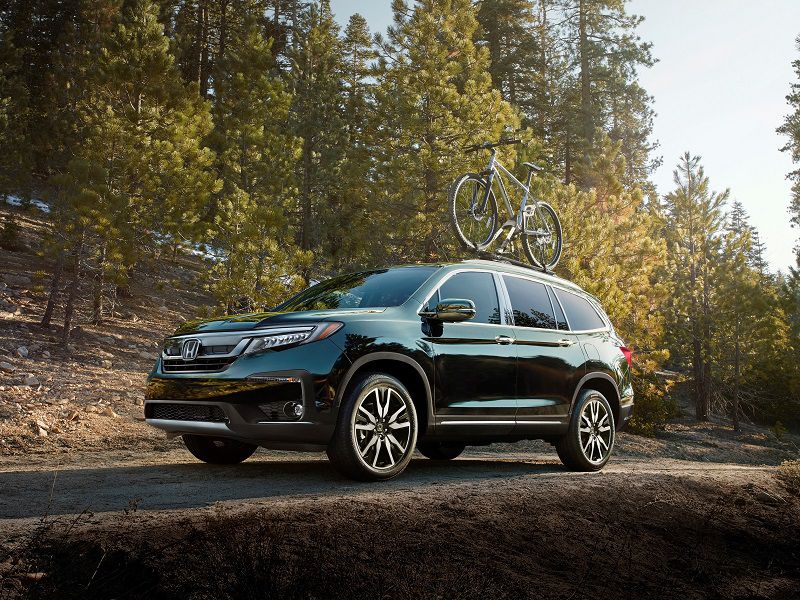
Photo by Honda
2018 Nissan Pathfinder
Of all the Toyota Highlander competitors mentioned so far, the 2018 Nissan Pathfinder has the tightest accommodations in the third row. But you still get more space back there than in the Highlander. The 2018 Pathfinder also introduces standard automatic emergency braking and Nissan’s “Rear Door Alert.” That new technology is designed to remind you to check the rear seats for valuables before you walk away from the vehicle.
To help with cargo, the Pathfinder is available with a hands-free rear liftgate that can be opened with a foot motion beneath the rear bumper. It’s actually a popular feature on many SUVs — although not the Highlander. The Pathfinder’s available LED headlights are less common in the segment, giving it more content you won’t see with the Highlander.
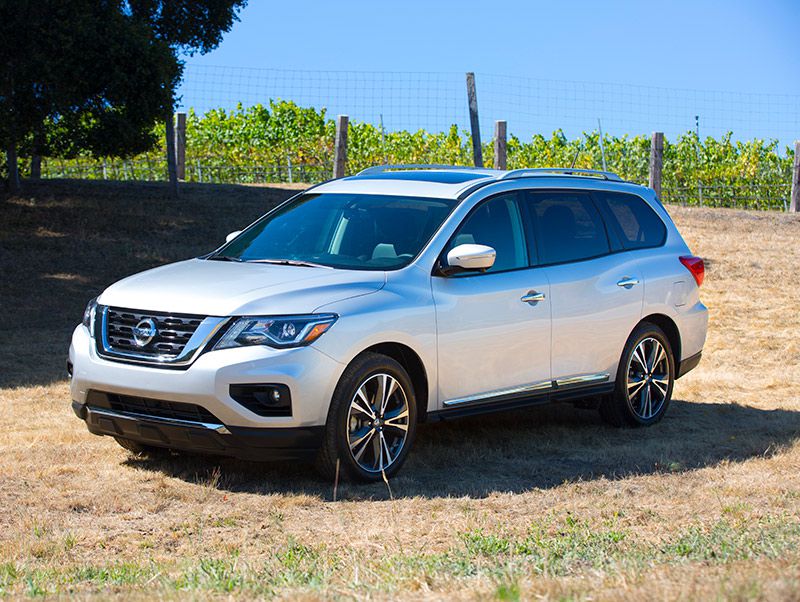
Photo by Nissan
2019 Hyundai Santa Fe XL
There are some big changes for the Hyundai Santa Fe lineup for 2019. Beyond the fresh designs and new content, the two-row Santa Fe Sport has dropped the “Sport” from its name. Meanwhile, last year’s three-row Santa Fe has picked up an “XL.” It’s that model, the 2019 Santa Fe XL, that joins our list of Toyota Highlander competitors.
Compared to the Highlander, the Santa Fe XL — despite its name — is the smaller vehicle. The Hyundai still has slight advantages in third-row accommodations, albeit with 17 percent less total cargo space. The big benefits for the Santa Fe XL are Toyota-topping technologies such as Android Auto, Apple CarPlay, and the kind of sophisticated head-up display you usually find in luxury SUVs.
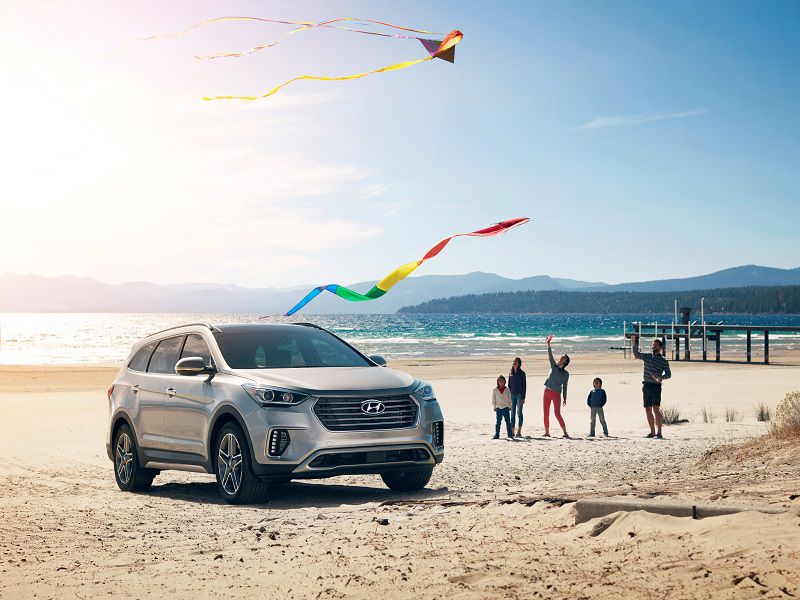
Photo by Hyundai
2018 Mazda CX-9
Turbocharged Toyota Highlander competitors include the 2018 Mazda CX-9. To help the CX-9 live up to Mazda’s reputation for zoominess, it relies on a 2.5-liter four-cylinder turbo engine that kicks out 227 horsepower and 310 pound-feet of torque on regular gas. With premium fuel, output increases to 250 horsepower. In either case, standard G-Vectoring Control can automatically adjust how power is sent to the CX-9’s driving wheels, making for sharper steering.
The CX-9 builds on that performance with EPA ratings of 22 mpg in the city, 28 mpg on the highway, and 24 mpg combined. Those figures are 2 mpg, 4 mpg, and 2 mpg better than in the standard Highlander, respectively. The CX-9 also has comparable levels of technology to the Highlander, though not as much cargo space or third-row headroom.
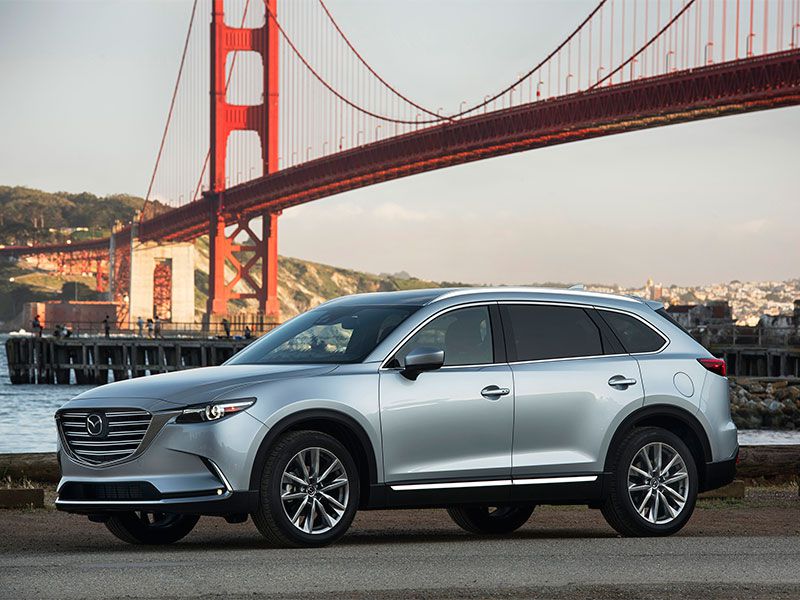
Photo by Mazda
2019 Subaru Ascent
One of the newest Toyota Highlander competitors is the 2019 Subaru Ascent. The largest Subaru ever sold by the company, the Ascent is 4.3 inches longer than the Highlander. Subaru uses that space to allow for both seven- and eight-seat cabin layouts. Each Ascent configuration has more third-row legroom, third-row headroom, and overall cargo space than its Toyota rival. The Subaru is also more fuel-efficient than the Toyota, even though the Ascent comes with standard all-wheel drive and the Highlander doesn’t.
As an all-new vehicle, the Ascent has all the new technologies, too. These include mobile Wi-Fi, Android Auto, Apple CarPlay, LED headlights, and a generous bundle of safety features. Highlights range from automatic reverse braking to a head-up display for the Ascent’s “EyeSight” driver-assistance package.
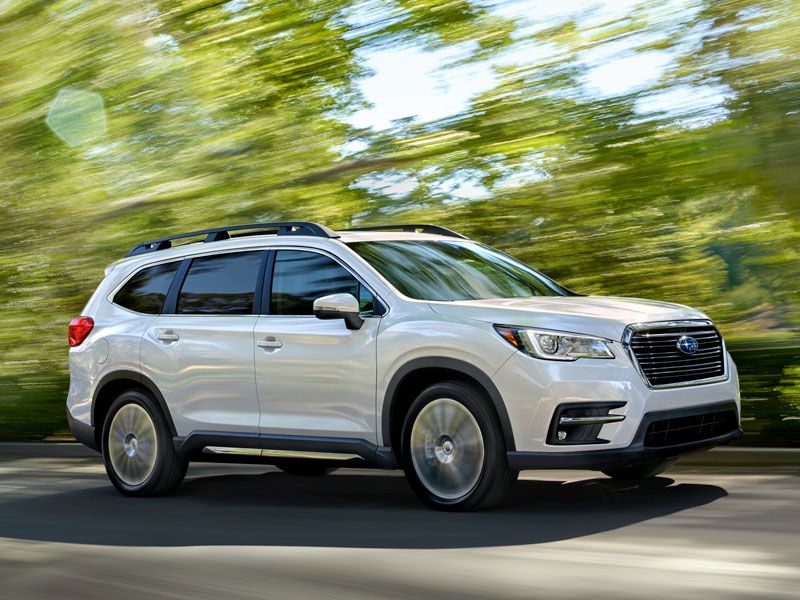
Photo by Subaru
2019 Kia Sorento
The 2019 Kia Sorento stands out if you’re shopping for smaller Toyota Highlander competitors. Consider: The Sorento is 3.5 inches shorter in length than the Highlander, with 10.7 fewer cubic feet of overall cargo space. Yet if your focus is on maximizing room for passengers, the Sorento surprises with a full 4 additional inches of third-row legroom.
Unsurprisingly, the Sorento carries more infotainment technology than the Highlander. For instance, Android Auto and Apple CarPlay are standard for the Kia, and wireless charging and a 630-watt Harman Kardon audio system are optional. Also, the Sorento was refreshed for 2019 and offers new equipment such as LED headlights and a driver-attention alert system. Neither are available for the Highlander.
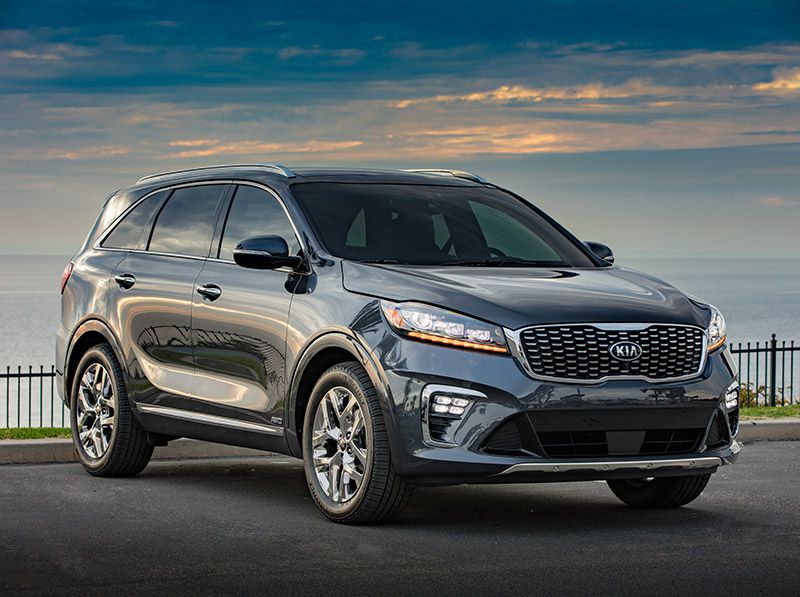
Photo by Kia
2018 Volkswagen Atlas
For years, VW didn't field a true Toyota Highlander competitor — but that all changed with the 2018 Volkswagen Atlas. As an all-new SUV, the Atlas enters the marketplace with Android Auto/Apple CarPlay smartphone integration and many of the industry’s most sought-after safety technologies. That includes all the usual suspects plus a post-collision braking system. It’s designed to prevent the Atlas from rolling into a second collision if it’s already been involved in a first.
The Atlas itself was specifically designed for U.S. customers, complete with a 5,000-pound towing capacity and a large and versatile cabin. Not only does the Atlas have a 20 percent advantage over the Highlander in third-row legroom, but it also leads by more than 15 percent in overall cargo space.
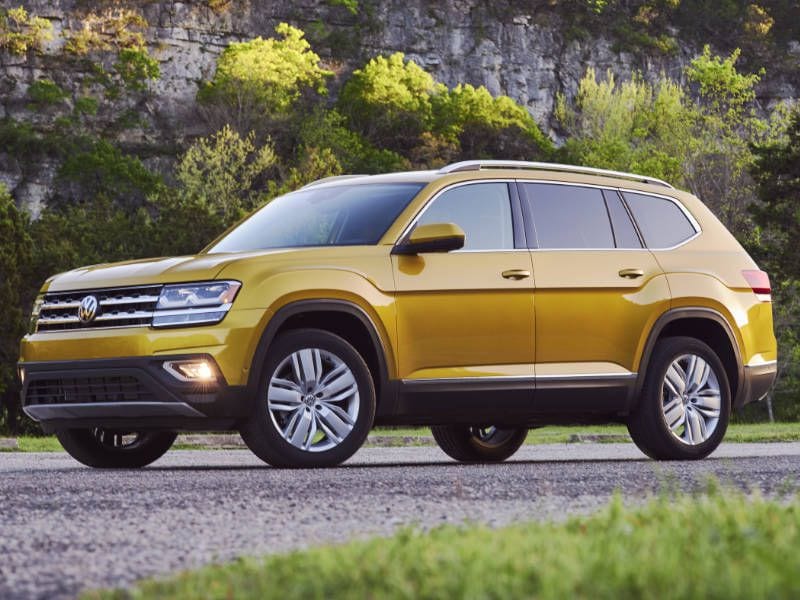
Photo by Volkswagen